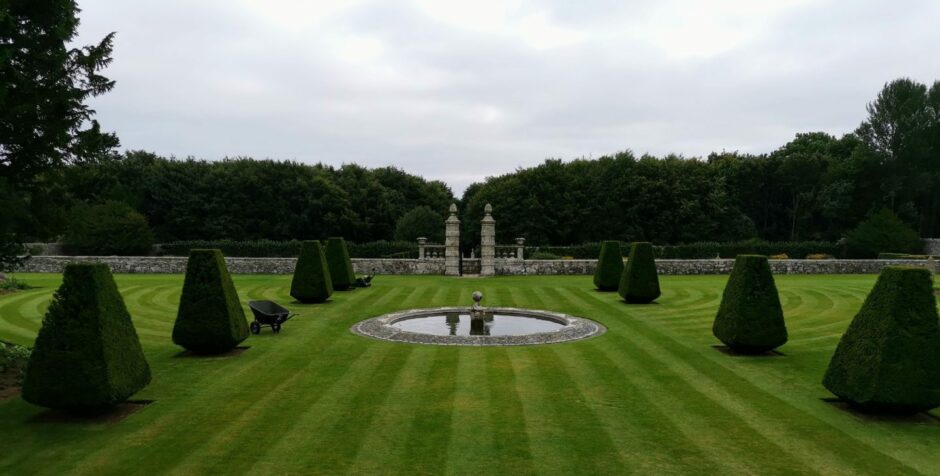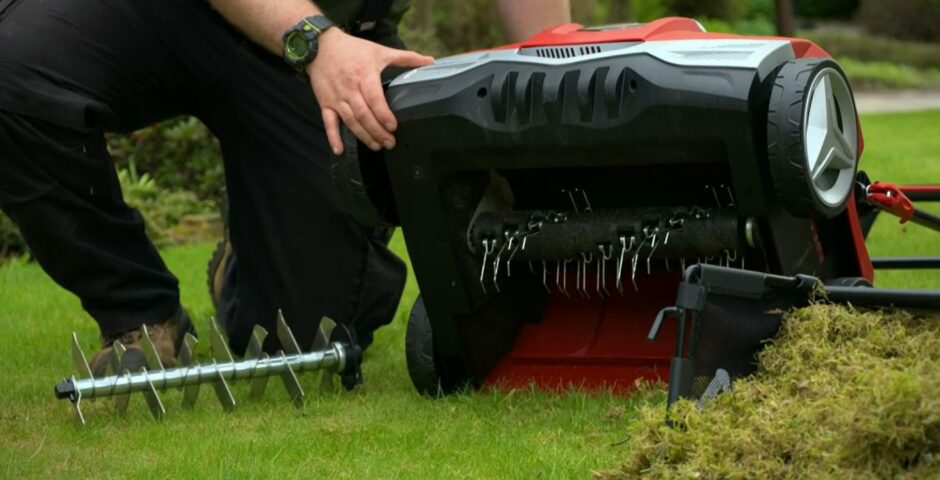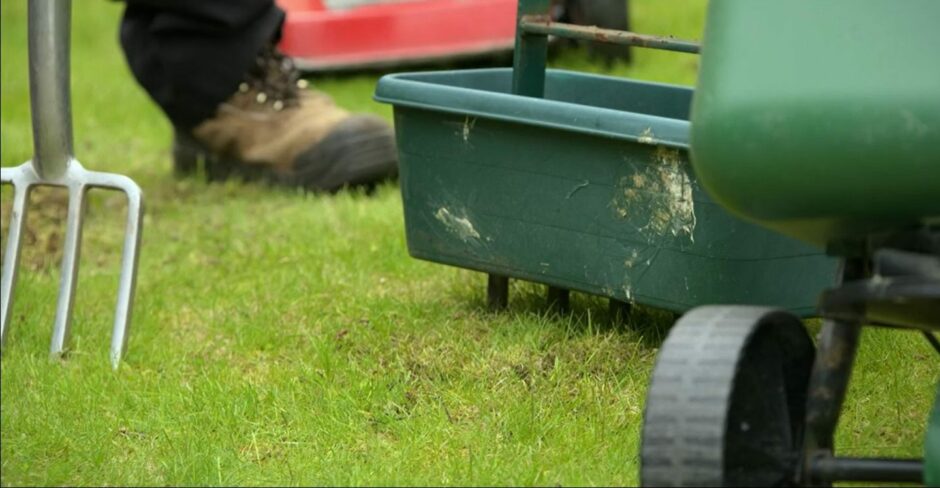Lawns are hard work. I’ve said it before. They are a profession all into their own.
From expert greenkeepers that make sure you can have the perfect bounce on the fairway; to the pros that come to your house and keep your little slice of grass looking tip top. They take constant work.
A way to go yet
At Beechgrove Garden we recently briefly reviewed the work that had been done on three lawns within the garden.
The lawns were not in bad condition when I started back in January but they certainly had a way to go before looking like those luscious green swards cut to perfection at Pitmedden Garden.
Hamish McDonald, the longest serving member of the team, taught me a heck of a lot about lawn care.
In his 27 years tirelessly and faithfully serving the garden, the legend certainly knows his fescues from his browntop bent.
It’s thanks to him that Pitmedden Garden has one of the finest manicured lawns in the walled garden that you’ll see up here in the north-east of Scotland, if not the country!
It takes time and effort
It can take years to get a lawn into top notch condition. We kicked started the spring by doing all the usual necessary lawncare jobs.
We scarified to remove moss and thatch. This was raked up and placed along perimeter fence lines.
The idea simply being to suppress the weeds along the fence. It can really chew through strimmer cord along fence lines.
It is also not practical to use the scythe along the fence line as it blunts the scythe or worse breaks the fence links.
On the lawn we then slitted, to cut through grass roots and promote fresh root growth which then boosts the top growth to give more lush grass growth.
The hollow tiner was then used to improve aeration and drainage. This also provides its share of moss and thatch which then needs tidied and placed along the fence.
After all this we feed the lawns using the spreader. The spreader is a great tool to get a perfect even coverage of feed across the lawn.
It can be tricky to calibrate but most bags give a volume per square metre on the back.
For smaller gardens I highly recommend a little hand-held spreader. These can take the guess work out of this important job and ensure a nice even distribution of feed.
Overfeeding by accident can be a big issue as it can scorch and kill off sections of grass. Underfeed, and well you’re wasting time and money really!
The lawn feed was spread on during ideal weather which is a day or so after a decent drizzle of rain.
There needs to be moisture in the soil for the nutrients to break down to be utilised.
You don’t want it applied when the lawn is very dry but also don’t want it applied when heavy rain is forecast that can wash it away. It’s about timing and reading the weather forecast.
Around two weeks after feeding the lawn we overseeded with fresh grass seed.
Overseeding is simply sprinkling seed over the lawn to help fill gaps and provide a thicker, lusher lawn.
In order to ensure maximum success I mix it first with some topsoil so that when it lands on the lawn it has a nice crumbly medium to germinate upon and develop those roots which can then penetrate down into the existing lawn below.
If no rain is forecast within 48 hours then get the sprinkler out.
Longer cuts
Well after all the spring work I have been keeping the grass cuts on the conservative side.
By this I mean keeping the cutting height slightly higher than usual. Within reason a longer blade of grass naturally has more area to photosynthesize and is therefore fed more, develops deeper roots and is more resistant to drought.
By simply leaving the grass to be a few millimetres taller you can do wonders to help boost it against all the competition it faces.
Autumn care
Well it’s slowing down now. The weather is cooling and the cuts will soon be reduced to every other week.
The height will then be raised until we eventually stop cutting. The spring cycle of work is repeated again but using an autumn fertiliser feed instead.
This is lower in nitrogen than spring fertiliser because we do not want as much top growth going into winter.
We are aiming to put the grass into hibernation mode so it is strong and resilient against all the frosts and snows to come.
Autumn fertiliser also has higher levels of phosphorus and potassium to boost those roots and feed them well before hunkering down until spring.
Take care and happy gardening.







Conversation